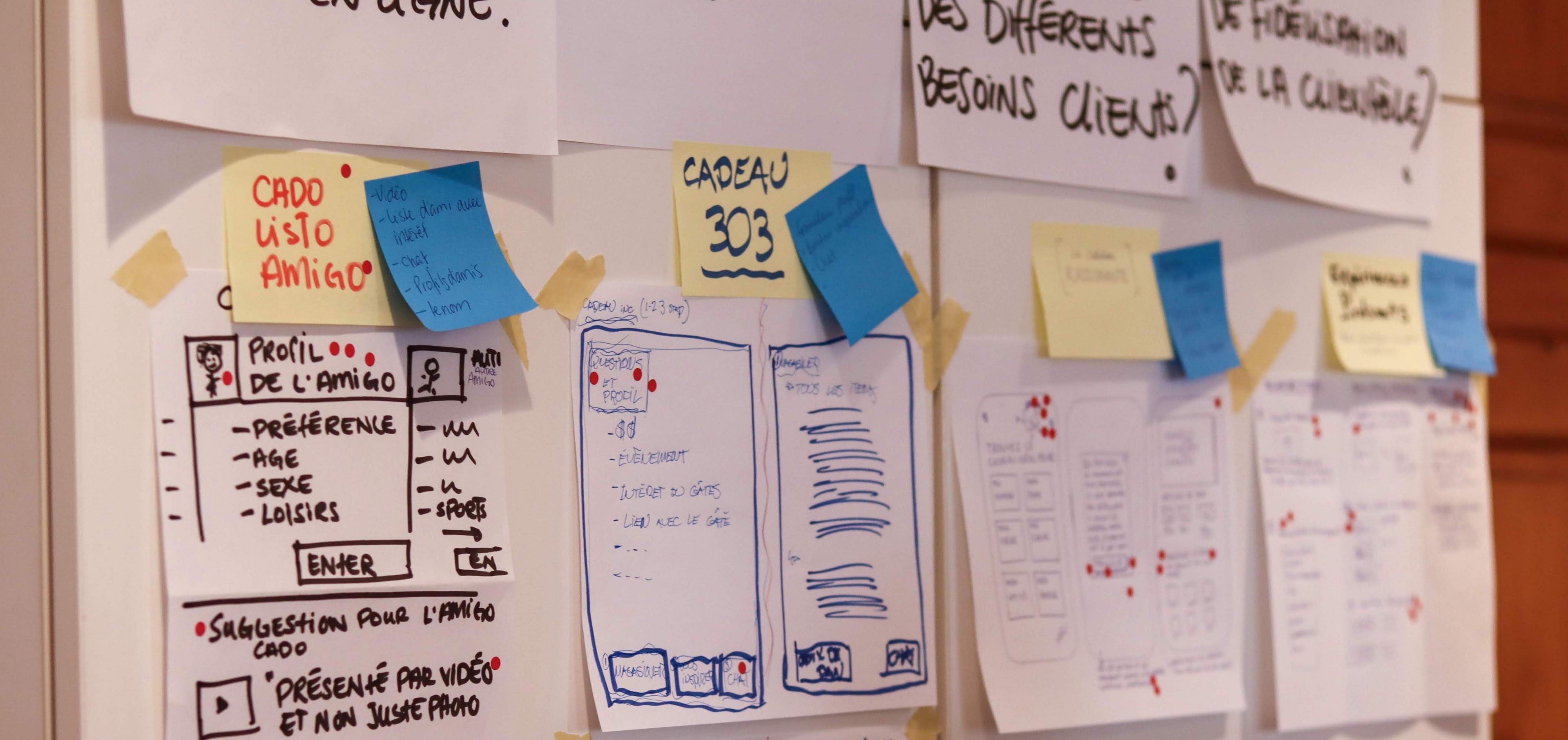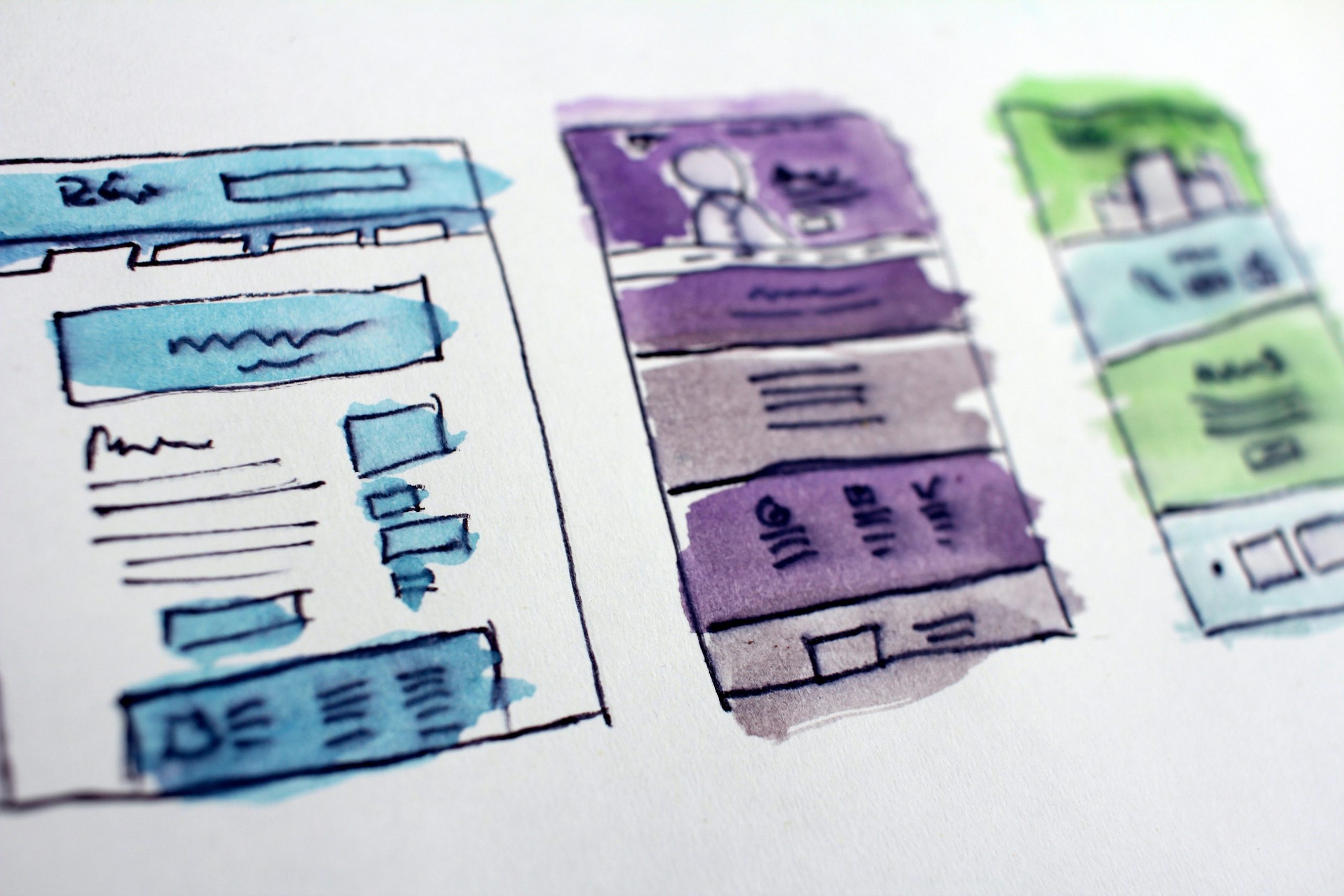Do you know what Design Thinking is? Or why it’s so popular? The philosophy of Design Thinking revolves around people and what they need or what they might need.
The term may seem new or trendy to you, but back in 1900, designers Charles and Ray Eames were already practising what they referred to as “learning by doing.” Then, as early as the 1960s, the term Design Thinking appeared in reference to the idea of using design as a method to solve problems in project management, team management or change management, while always relying on human understanding to come up with innovative ideas.
However, year after year, Design Thinking is still associated with numerous stereotypes and preconceived ideas. Okay, so let’s see if we can debunk some of the misconceptions.
Is Design Thinking only for designers?
Nope—on the contrary! Design Thinking is not exclusively for designers. Its innovative principles can be applied to fields as varied as art, science, technology and management. In short, no matter the field of application, empathy, creativity, co-creation, iterative design and the right to make mistakes are the essence of this innovative methodology. The goal is to use design tools to manage innovative projects and solve problems.
The point of this methodology is not to turn you into a designer but rather to help you adopt a way of thinking that is based on questioning everything to better serve your users. These sessions of intense creativity can be greatly beneficial for any team. In fact, Design Thinking techniques and strategies can be used by employees at any level of a company, from teams of creative employees to managerial teams. Everyone can benefit from learning how to use its valuable tools to find new solutions to problems.
“Design thinking is a human-centred approach to innovation that draws from the designer’s toolkit to integrate the needs of people, the possibilities of technology, and the requirements for business success.” — Tim Brown, IDEO
So why does the term include the word Design?
It’s important for designers to have empathy, meaning that designers have to try to see things from the users’ point of view and think about how the products and services being offered fit into users’ lives. Designers also use prototyping to quickly test ideas and improve the user experience. The concept of “failing fast to succeed sooner” is strongly encouraged and is an extremely powerful way to design relevant solutions quickly.
“Most people make the mistake of thinking design is what it looks like […] That’s not what we think design is […] Design is how it works.” — Steve Jobs
The Design Thinking approach involves questioning the problem, assumptions about the problem and possible solutions. It’s extremely useful for tackling problems that are poorly defined or unfamiliar, as the method reframes the problem around people and generates multiple ideas through creative sessions. It’s a hands-on approach that uses prototyping and user testing.
Is Design Thinking a participatory research process?
Yep! The Design Thinking approach often involves a number of people from different departments. In order to make sure that the search for innovative solutions revolves around people rather than systems, participants have to work in teams in an experimental way while learning from their mistakes and adapting to user needs. This collaborative intelligence results in new ways of thinking.
Design Thinking is a way for everyone to dig a little deeper together. Many variations of the Design Thinking process are in use today. However, all of the variations result in solutions that have three important characteristics:
- desirability (the solution meets user expectations)
- feasibility (the solution is functional and possible given the state of the art in the field)
- viability (the solution fits into a long-term economic model)
All the workshops are the same, right?
Wrong! There are currently hundreds of workshops, all of which are different. For example, while some workshops encourage divergent thinking, others seek to converge ideas. Sometimes, teamwork is encouraged, whereas at other times individual reflection is more useful. As you can see, each workshop has its own purpose. You’re bound to find the type of workshop you need with choices ranging from Sprint hero and 1-2-4-All to Start with why and Crazy 8s.
So, what does all of this mean? It means that Design Thinking can be used for everything from complex topics to weekly meetings. And most likely, your weekly meetings aren’t just for designers!
What are the advantages of Design Thinking?
With all the digital options out there, user behaviour is changing very quickly. And with such a competitive market, it’s becoming difficult for many companies to carve out a place for themselves and expand.
Design Thinking provides several advantages when trying to come up with good ideas in this context:
- An in-depth understanding of user needs helps when rethinking products and services.
- An environment that encourages experimentation helps foster curiosity and learning.
- Creative interactions within teams lead to better professional relationships.
- Involving all stakeholders in a project leverages each of their skills and improves efficiency.
- A multidisciplinary approach helps to stop people from working in silos without consulting actual users.
- The quick progression to prototyping helps reduce the financial cost by quickly identifying errors.
- Using iterations to manage projects pushes participants to take the market reality into account, while user testing keeps the innovations relevant.
As you can see, Design Thinking can be used in many different contexts. In fact, it can be used whenever thinking should revolve around people.
Nonetheless, mastering Design Thinking is a different story. It involves acquiring specific skills and using proper work methodologies, such as Design Sprint, to frame the workshops.
Check out our article on the role of the Design Sprint facilitator.





